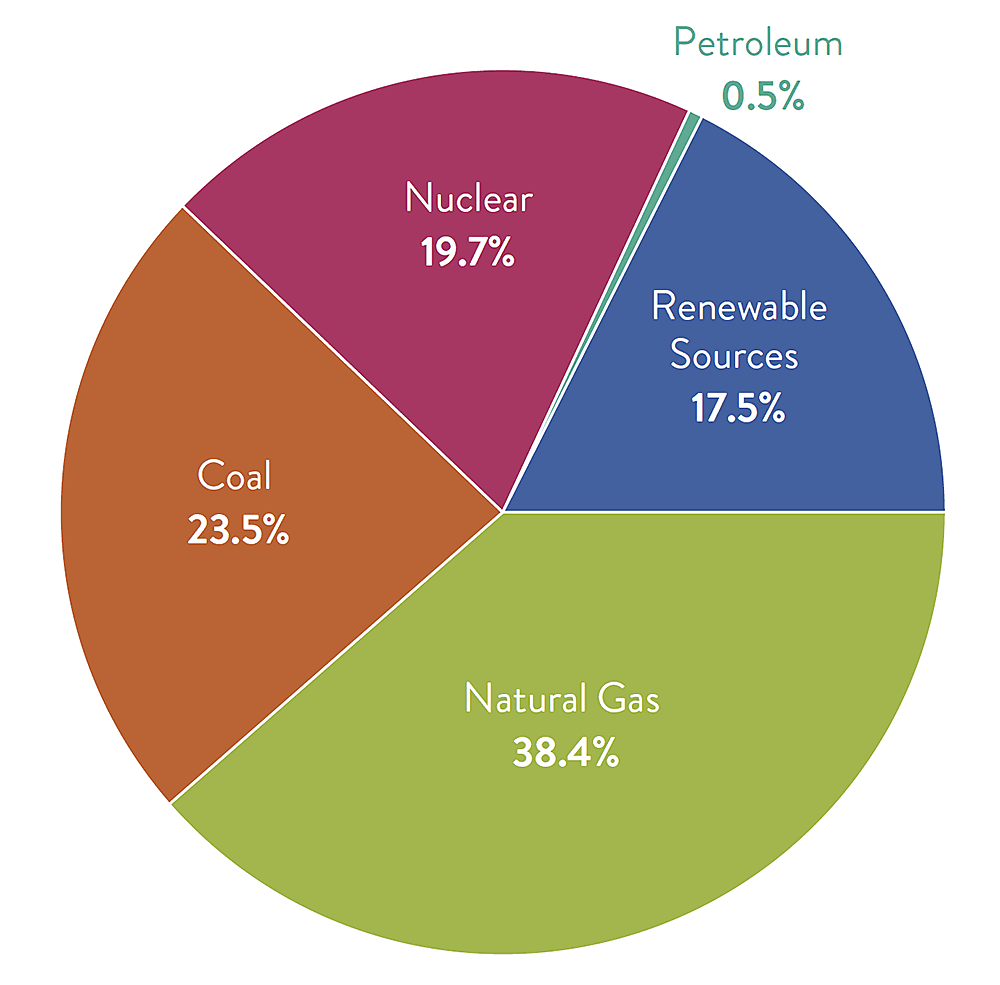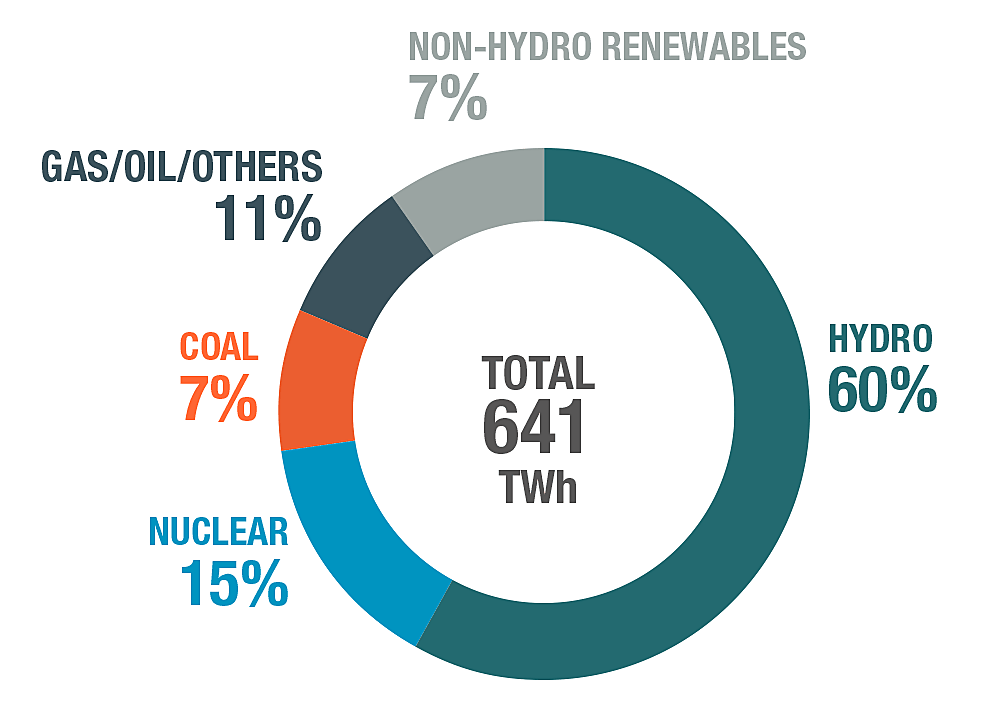Power Generation
Generation infrastructure transforms natural gas, coal, water, solar, wind and other sources into electricity. The US is transitioning from a fossil-fueled central generation model to a more diversified and decentralized portfolio. This transition, which requires significant updates to our energy infrastructure, poses a threat as investment and building must keep pace with when new generation will be needed. The US is the 2nd largest generation producer (17%) and Canada is the 6th (2%). (China is 1st at 27%)
Net generation needs have been flat for 20 years, and that is not expected to change anytime soon. However, the conversion of generation to more renewable resources requires those resources are ready to “pick up the slack” when traditional fossil fuel systems are retired. Since 2009, Coal generation has decreased from 45% to 23% of the energy generation portfolio. The difference has been picked up by Natural Gas (24% to 38%) and Renewables (4% to 11% - excluding hydro). It is expected for the next 20 years natural gas will be the dominant fossil fuel. However, by 2040, the US Energy Information Administration (EIA) projects renewables will exceed natural gas generation, while nuclear and coal generation continue to decrease.

There are approximately 10,000 generation facilities in the United States. 2019 was the first time total renewable generation exceeded that of coal-fueled generation. 2020 was the first time renewables accounted for the largest portion of new generating capacity. The renewable share of capacity is on track for significant increases by 2023.
In Canada, the picture is quite different. Nearly 60% of Canada’s electricity generation comes from hydropower, including 4 provinces (Manitoba, Newfoundland and Labrador, Quebec, and British Columbia) and 1 territory (Yukon) that have nearly 90% or more of their generation coming from hydro. However, the other provinces and Northwest Territories all have less than 40% of their mix coming from hydro, with Nova Scotia and Alberta at less than 10% whereas Prince Edward Island has no hydro footprint. Overall, Canada’s grid is much heavier on renwable sources. In 2019, Canada exported approximately 10% of their generation (60.4 TWh) of electricity to the US.

The nation's growing interest in maintaining an environmentally conscious society coupled with tax incentives have led to the projection renewable energy such as solar, wind, and hydro-electricity will account for 37% of all new capacity additions and produce 17% of total generation in the next 25 years. As these "newer" technologies for energy generation crop up throughout North America, corrosion protection is a challenge each new generation farm or facility will face.